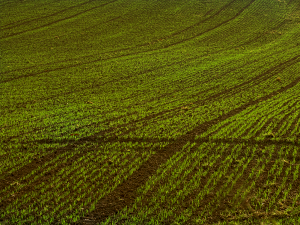 Northwest Region Crop Report Prepared by: Manitoba Agriculture
Northwest Region Crop Report Prepared by: Manitoba Agriculture
June 26, 2017 |
Northwest Region
Showers throughout the week brought 13 to 20 mm of precipitation in Swan Valley and 25 mm in The Pas. Wet and cool weather throughout the week gave little opportunity for spraying. Producers took advantage of the 1 or 2 spray days they had, however this left ruts in fields. Night time temperatures reached down to about 6 degrees in some areas.
Crops in the North West region continue to advance, with the exception of The Pas, where prolonged excess moisture remains the main issue. Soil moisture conditions are excessive with water at the soil surface and less than 10% of the crop is seeded. Producers who carry crop insurance have submitted excess moisture claims. There are a few unseeded fields in the Laurier/McCreary area due to excess moisture but there are hopes of getting a feed crop in if conditions allow.
Canola ranges from 25% at the seedling stage, 70% at rosette, and a small amount of the earliest seeded fields are starting to bolt. Wheat is at 90% seedling/tillering with 10% of later seeded crops at emergence. Soybean, pea and fababean crops are in the vegetative stage. Crops in the Laurier/McCreary and Eastern portion of the Swan Valley are starting to show signs of excess moisture stress. Many crops are also in need of heat. Diamondback moth and Bertha Armyworm moth counts remain low in the North West region and are of no concern at this point.
With the exception of a few fields haying for beef operations has not started. Grasses have been headed out for awhile and alfalfa fields are just coming into bloom. There have been reports of alfalfa weevil in the Ste. Amelie/McCreary area.
Corn silage fields would benefit from heat particularly after the weekends low night time temperatures. Temperatures near zero occurred in localized low areas near Roblin.
For the most part, pastures are in good condition across the region apart from The Pas. Pastures have been suffering from excess moisture in the Pas and cattle are grazing hayland. As a result, producers are concerned about feed supplies for the winter.
